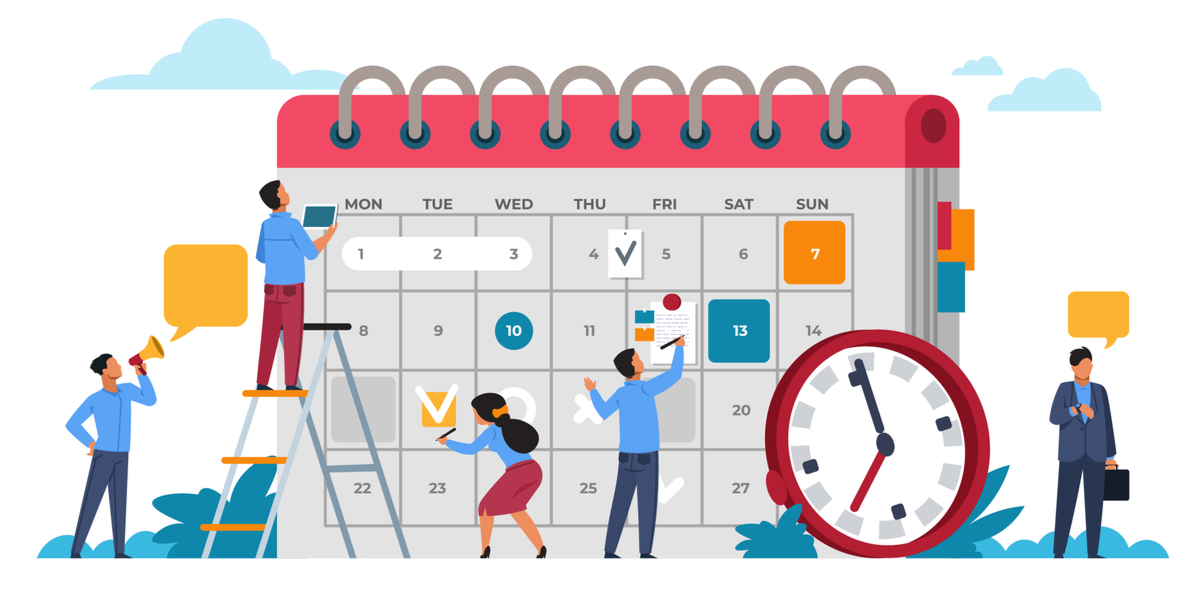

The DNA of the workplace has seemingly changed overnight. The things important to workers even a few years ago no longer hold true. Even more than pay, workers now value work-life balance, flexibility, and control over their schedules. So in the quest to hire and keep hourly workers in a tight labor market, including Shift Swapping in your scheduling can translate to stronger recruitment, retention, and business outcomes. If you are a Kronos WFC, Workforce Dimensions, or Workforce Ready user, the Swap Requests feature allows employees to handle shift changes (or swaps) between them with little or no input from a manager. The shifts must be swapped on a shift-by-shift basis, which means the employee requesting the swap must work one of the other employee’s shifts, so that time and labor costs stay on track.
Kronos: How To
Shift swapping is easy. When entering a Swap Request, employees go into the My Calendar widget in Kronos (both laptop or mobile) and select the day they want to have off. They then select the shift from a second employee’s schedule that they want to work in exchange. The following fields such as date request, available employees, and submit are very intuitive. A completed swap request will show up as Complete.
From there, it’s easy to see when the second employee responds with either Accept or Refuse the swap request. And, depending on your Kronos configuration, a manager can also review the request. Upon approval, the schedule change appears on your calendar, and the request status is updated to Approved.
To shift swap in Kronos’ mobile app is even easier, here’s a one-minute video.

The Value of Shift Swapping
-
Takes the stress of scheduling conflicts off of a manager
-
Puts control and flexibility directly in the employee's hands
-
Builds collaboration, loyalty, and community between employees
-
Creates a self-sufficient workforce
-
Helps businesses reduce turnover
-
Increases work-life balance for employees
-
Improves customer service by reducing no-shows and absenteeism
-
Reduces operating costs
-
Optimizes scheduling
-
Improves performance
-
Increases customer satisfaction
Making the Switch Toward Flexibility
Still, while shift swapping is growing in popularity some managers — especially those in retail — are still reluctant to put this scheduling tool into play. They fear schedule confusion, no-shows, overtime costs, disjointed personnel (too many F versus A workers on one shift), and scheduling inconsistencies that could affect customer service. It turns out, more studies show, that the old school way of thinking may end up costing employers. In one study, 62% of retail mangers said scheduling conflicts led to associates quitting. A CAP study found average costs to replace a $10/hour retail employee would be $3,328.
A study from Kronos sheds light on current this current lag in thinking in that 34% of managers say that even though managing shift-swap requests is one of the biggest workforce management challenges they face as an organization, only 23% of retailers worldwide enable self-service shift swapping on a mobile device.
In the Stable Scheduling Study conducted by Center for WorkLife Law and The Gap in 2018, 95% of part-time, hourly workers said the ability to trade shifts helped them with a work-life balance, 97% praised the system for assisting them to get more hours when they wanted them. Also in terms of workers adapting to shift swapping, 72% of shifts posted a week or more in advance were picked up by other employees, 50% of shifts one to three days in advance were picked up, 30% of shifts posted a day or less in advance were picked up. On the business side, sales increased by 7%.
Tips for Efficient Shift Swapping
-
Communicate. Put a simple, one-page shift swapping policy in place that outlines terms
-
Assign responsibility. Put ultimate responsibility on the person whose name is in the Accepted schedule so that disagreements and misunderstanding don’t arise later.
-
Match skill levels. Configure swap requests to make sure swaps are equal and match levels of experience, training, and skills.
-
Manager approval. Include Manager approval on swap shifts to ensure skill levels, holiday traffic, and business requirements are met for the day being covered
-
Give deadlines. Create deadlines that give employees a window to make a swap; 24 to 72 hours before a shift. This will give employees time to confirm dates and fill slots and give a manager time to review a final roster.
The constant balancing act between the needs of the business and an employee’s need for flexibility can cause friction, affect morale, and increase turnover. However, when automated with planning and intelligence, Shift Swapping can relieve managers of stress and empower workers to have more say over when and how often they work.
Do you need help configuring your workforce scheduling and optimizing your workflow? Be it Kronos, or another WFM system, the experienced team at Improvizations can help.
To determine if your company needs to fire up its scheduling power, download our Advanced Scheduler Insights paper below.

.png)
.png)
.png)
Comments